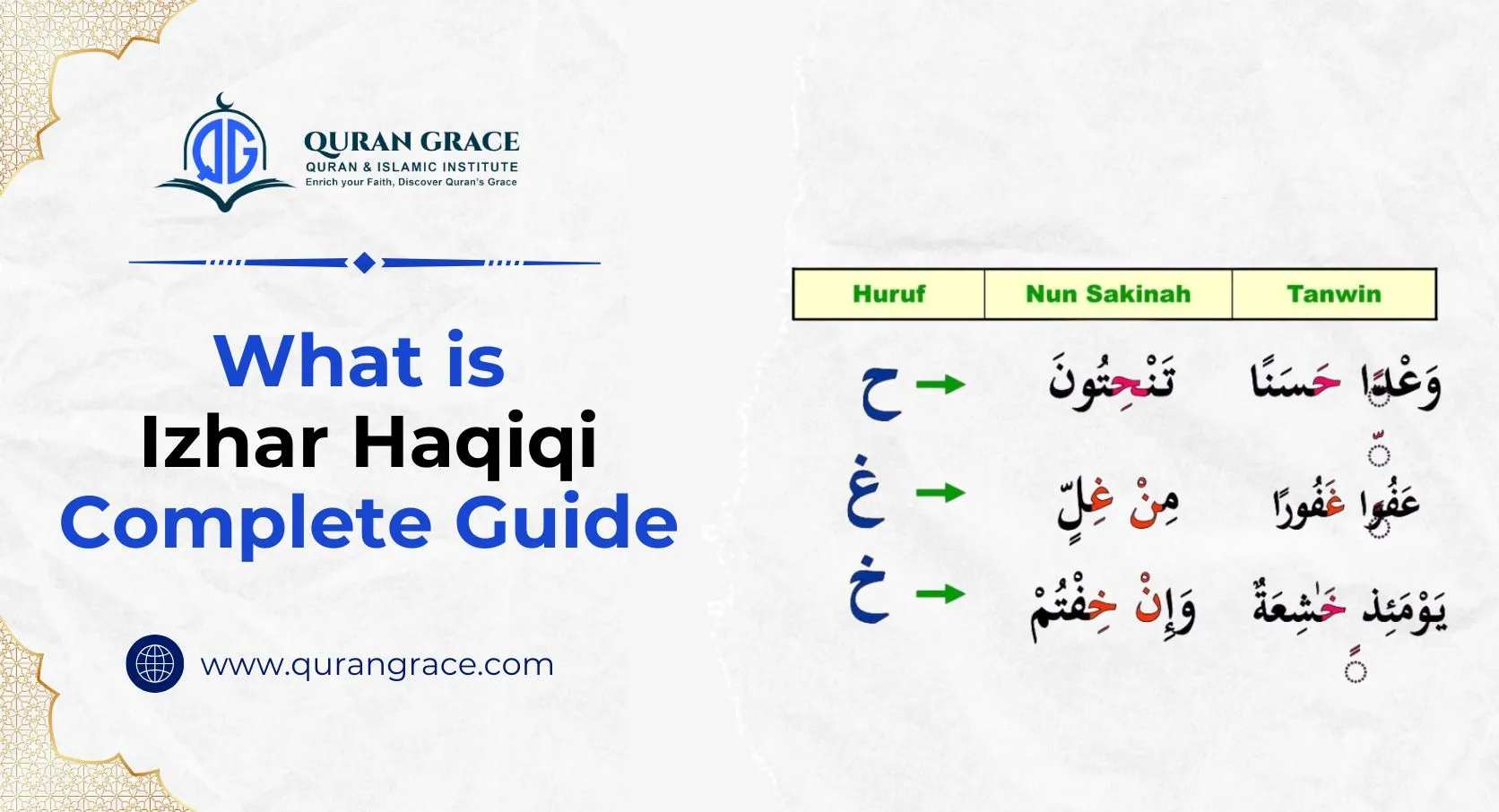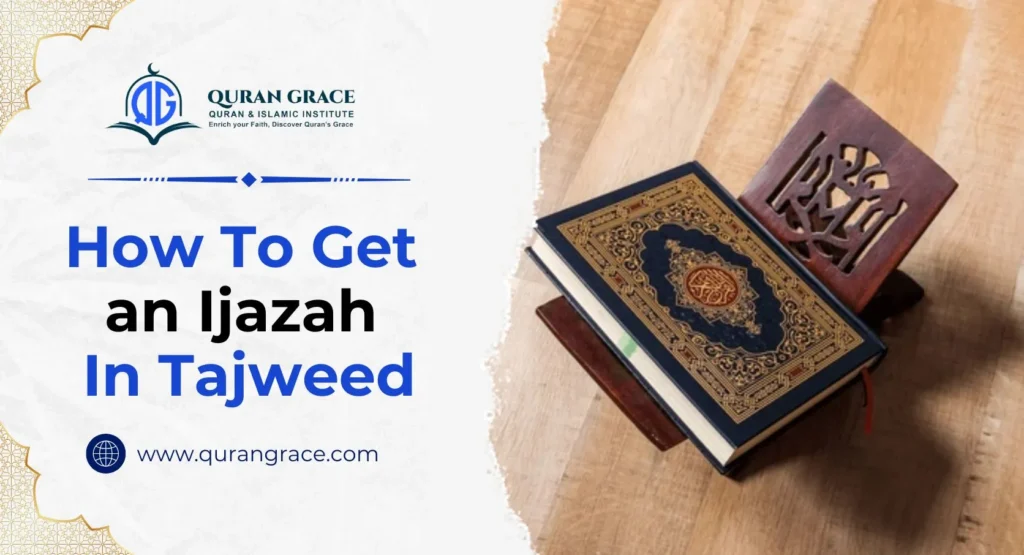In the vast and beautiful world of Tajweed, there are fundamental rules that elevate one’s reading from a simple act to an art form. Among these, Izhar Halqi stands as a cornerstone principle. While its name may sound complex, its purpose is beautifully simple: to ensure clarity and precision in the pronunciation of specific letters. Let’s explore this rule along with the examples from the Quran in great detail.
Table of Contents
ToggleWhat Exactly is Izhar Halqi?
At its heart, Izhar Halqi (إظهار حلقي) is a rule of pronunciation that dictates a clear and distinct articulation of certain sounds. The term is a combination of two Arabic words:
- Izhar (إظهار): This means “to make clear,” “to manifest,” or “to show.” It’s about bringing a sound to the forefront rather than hiding or blending it.
- Halqi (حلقي): This refers to the throat, the area from which certain Arabic letters are pronounced.
Put together, Izhar Halqi translates to “clear pronunciation from the throat.” This rule applies specifically to two key sounds in the Arabic language: the Noon Sakinah (نْ) and Tanween (the double vowel signs: ً, ٍ, ٌ).
The Anatomy of the Rule: When and Why it Applies
The rule of Izhar Halqi comes into play when a Noon Sakinah (a Noon with a sukoon or stillness sign) or a Tanween is immediately followed by one of six specific letters. These six letters are the reason the rule is called “Halqi,” as they are all pronounced from the throat.
The six throat letters are:
- ء (Hamzah)
- هـ (Haa)
- ع (Ayn)
- ح (Haa’)
- غ (Ghayn)
- خ (Khaa)
These letters are deeply rooted in the throat, each with a distinct point of articulation:
- Hamzah (ء) and Haa (هـ) are pronounced from the deepest part of the throat (Adnal-Halq).
- Ayn (ع) and Haa’ (ح) are pronounced from the middle part of the throat (Wasat al-Halq).
- Ghayn (غ) and Khaa (خ) are pronounced from the top part of the throat, closest to the mouth (Aqsa al-Halq).
The core principle behind Izhar Halqi is the physical distance between the articulation point of the Noon (the tip of the tongue) and the articulation points of the six throat letters. Because these points are so far apart, merging the sounds is physically impossible and phonetically incorrect. The only way to articulate them properly is to pronounce the Noon or Tanween clearly and separately before moving on to the throat letter.
The Practical Application: How to Recite with Izhar Halqi
Applying Izhar Halqi is straightforward once you know what to look for. When you encounter a Noon Sakinah or a Tanween followed by one of the six throat letters, you must do the following:
- Stop the Ghunnah: The most crucial aspect of Izhar Halqi is the complete absence of Ghunnah (nasal sound). Normally, when a Noon Sakinah or Tanween is merged with the next letter (a rule called Idgham), a nasal sound is produced. With Izhar Halqi, this sound must be completely suppressed.
- Clear Pronunciation: Articulate the Noon Sakinah or Tanween exactly as it is, as if it were an independent sound, before proceeding to the next letter. The sound should not be elongated, hidden, or modified in any way.
- Maintain Regular Pace: The transition from the Noon/Tanween to the throat letter should be smooth but firm, without any pause or hesitation.
Think of it like this: you’re saying the “n” sound in English and then immediately saying the next word without blending them. For instance, in the phrase “turn over,” you don’t blend the “n” and the “o” into one flowing sound; you say “turn” and then “over” clearly. Similarly, in Quranic recitation, Izhar Halqi ensures that the “n” sound of the Noon/Tanween is pronounced cleanly before the throat letter is articulated.
Examples from the Holy Quran
Seeing the rule in action makes it much easier to grasp. Here are some common examples you’ll encounter while reciting:
- Noon Sakinah followed by Hamzah (ء):
- مَنْ ءَامَنَ (man a’amana)
- Notice how the “n” sound is pronounced fully and clearly, followed by the sound of the Hamzah. It is incorrect to merge them into a nasalized “maamanna” sound.
- Tanween followed by Ha (هـ):
- عَلِيمٌ هَادٍ (‘aleemun hadin)
- The Tanween on the letter “meem” is a clear “un” sound. This sound is not blended into the “ha” that follows.
- Noon Sakinah followed by Ayn (ع):
- مِنْ عِلْمٍ (min ‘ilmin)
- The “n” sound is distinct and separate from the subsequent ‘Ayn sound.
- Tanween followed by Ha’ (ح):
- خَيْرٌ حَافِظًا (khayrun hafithan)
- The “un” sound of the Tanween is pronounced without any nasalization before the letter Ha’.
- Noon Sakinah followed by Ghayn (غ):
- فَسَيُنْغِضُونَ (fasayunghidoona)
- The “n” sound is clear, followed by the Ghayn.
- Noon Sakinah followed by Khaa (خ):
- مِنْ خَيْرٍ (min khayrin)
- The “n” is pronounced distinctly before the Khaa sound.
Why Izhar Halqi Matters
Mastering Izhar Halqi is not just about adhering to a set of rules; it is about preserving the divine message of the Quran.
- Clarity and Meaning: Correct pronunciation prevents a change in the meaning of the words. The Arabic language is highly sensitive to subtle phonetic differences, and mispronouncing a letter can alter a word’s entire meaning. Izhar Halqi ensures that the intended message is conveyed accurately.
- Aesthetic Beauty: Tajweed, including Izhar Halqi, adds a melodic quality to recitation. The clear, precise sounds of the letters, articulated from their proper points of origin, create a harmonious flow that is both beautiful to the ear and uplifting to the heart.
- Following the Sunnah: The rules of Tajweed were compiled from the way the Prophet Muhammad (peace be upon him) recited the Quran. By applying Izhar Halqi, we are following his example and preserving the recitation as it was revealed.
Conclusion
By understanding the simple yet profound principle of Izhar Halqi, we can take a significant step towards reciting the Quran with the respect, accuracy, and beauty it deserves. For in-depth analysis and practice of each Tajweed rule, you are welcome to join Quran Grace and enrol in the latest Tajweed classes for beginners with a free evaluation.








